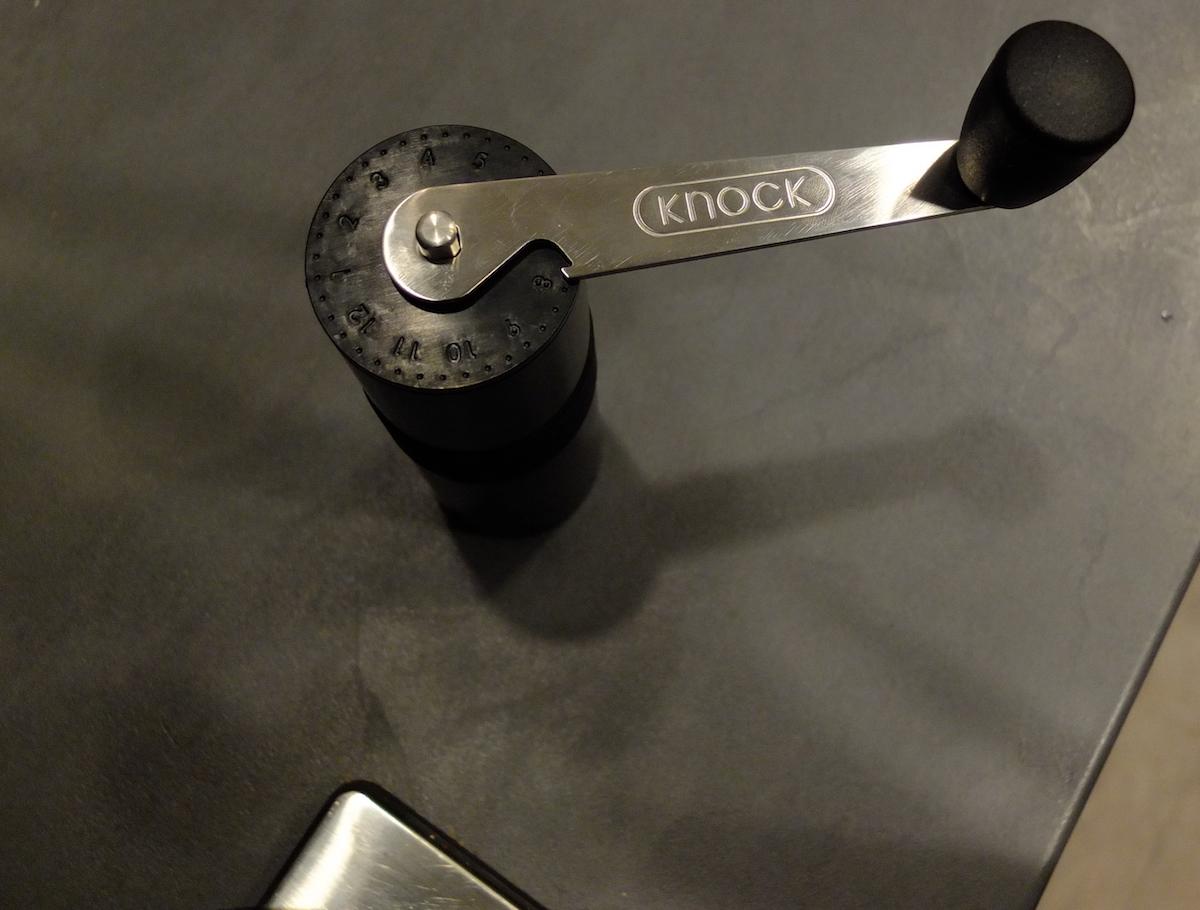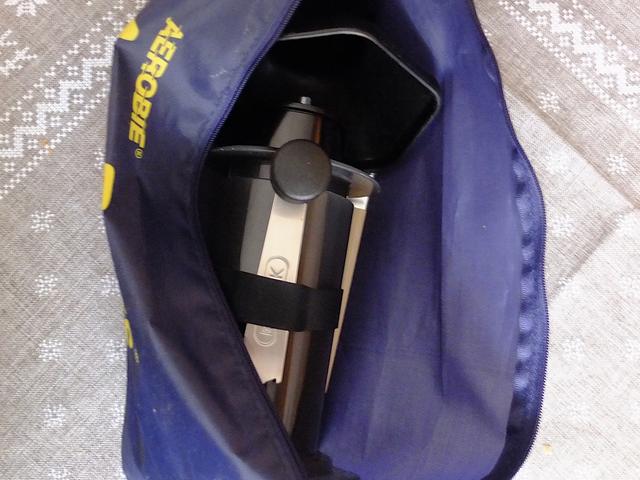Choosing the right tool for your home barista setup is a hard task. Manufacturers and resellers put massive effort to make your decision easier, but it actually makes your life harder. A few weeks ago, I decided to upgrade my manual brew set by replacing my good old Hario Skerton - for obvious reasons. The main problem with it is that the axis is not fixed at two points. Hence, the decent, entry level ceramic burr grinder is not capable in providing the admired ground size consistency without any crafty hack. So, I was on the lookout for a better construction. The following factors influenced my new weapon of choice:
- In theory, ceramic burrs are meant to keep their sharpness for a longer time, but they tend to provide a lot more fines in the coarser range (filter grind). Besides that ceramics brake more often
- I needed the tool before the pre-Christmas chaos. I also didn’t want any overseas warranty. So, I started to hunt through European web shop offers
- My budget was set to under 200 EUR
- Although usually I make coffee for myself using V60 or Clever Dripper, I've put the espresso size capability with low priority to my list of requirements
A handful of potential manual grinders that I came across:
The Chinese Timemore Chestnut is a promising player in the manual grinder market. The 2017 Red Dot Design Award winner product is available in the Polish webshop, CoffeeDesk, for around 110 EUR.
With its reasonable price the German Zassenhaus Quito was the cheapest option on my radar. It can be purchased from Amazon.de for only 70 EUR.
The notorious Comandante was placed at the bottom of my list because of its hefty price tag. The other German grinder seems to be an enhanced version of the Quito with a completely different and unique nitro burr set.
Aergrind, the youngest child of Knock coffee kit family, made its debut at the Aeropress Championship in Seoul recently. The compact grinder, founded on Kickstarter, is based on the British company’s previous models. Its predecessors Feldgrind and Hausgrind have already proven their quality amongst home baristas.
I found the brand new product in the webshop of The Barn roastery for just 100 EUR. I did not hesitate too much to order it along with a bag of 250g Nano Challa filter roast.
First thoughts about the Aergrind
My pack arrived via tracked FedEx within 3 days for a reasonable 5 EUR shipping cost. The Aergind was placed in plain carton packaging stuffed with bubble plastic wraps for safety. Aside from the grinder, the handle and the two spare rubber rings, the paper tube didn't include anything else - not even a piece of paper with instructions.
Without the assistance of a handbook, I watched carefully the demo video on Knock's Kickstarter page and followed Peter's guidance to adjust my new toy for the first V60 test brew. Because the handle is relatively short, starting the grind required a little extra force but the hardened black steel burrs seemed to be sharp enough to process the 20g of Ethiopean beans within 45 seconds. Although I did not make any exact measurement, the ground size consistency looked much better than what my previous grinder managed to produce. The grind of Aergrind had less fines than Skerton's. I have to mention though that a thin mud layer still remained on the filter paper above the coffee bed. I liked the way how easy it was to adjust the grind size during finding the sweet spot.
If you have an Aeropress you can use its funnel to feed the grinder with beans because it fits perfectly on to the top of the Aergrind. The maximum capacity is around 25g, depending on the variety of the beans, which is quite OK from a compact tool. It is designed to fit exactly into the inner tube of the Aeropress, so you can optimise the required place of your travel kit.
One thing I found mildly distressing about the construction is that during my usual 20g grind the burrs could be loosen around 1/12 of a full turn; which means the particles at the end of the grind are slightly coarser than your setting was at the beginning. Of course you can readjust the dial during the process, but it's not ideal.
Pros
- Stepless grind size adjustment from Turkish coffee to French press
- Good material, massive construction, seems to be a long lasting product
- Compact size, designed to fit inside an Aeropress
- Same quality 38mm coated burr set as in Feldgrind
- It produces a relatively low noise during operation
- Reasonable price compared to its competitors
- Stable axle, no wobbling
- Lightweight with eco-friendly packaging
- Handle can be used as a beer opener 🍻
Cons
- Grinder is shipped without documentation
- The dial lid slips off the shaft easily. I'm afraid of losing it
- The ground container clogs tightly to the upper half of the device. If you are not careful, the ground coffee can spread on the floor during its removal
- The fines stick to the bottom edge of the container. It's hard to keep it clean without a brush
- The coarseness can slightly change during a full grind
Grind size setup instructions
While I was preparing this review, I found the same, half-official Aergrind setup manual in various coffee forum threads. Let me quote a piece of the inventor's advice from those discussions:
With the crank arm in place, turning the dial to the right (clockwise) will tighten the burrs, making the particles finer; turning to the left (anti-clockwise) will loosen the burrs grind, making the particles coarser. Turn the dial left until you can turn no more, and you have locked the burrs.
...
Everyone’s method and kit will vary, so for grind settings the following are really only guides to where you should start. You can expect espresso grinds to be around one full turn from locked plus another 3/4s of a turn - or as we put in Knock grinder referencing 1:10.
We would encourage you to refer to the settings using this formula - 1[turn]:10 [dial number]. It helps everyone comparing grinds to get in roughly the same position.
Bialetti/ Stovetop and Aeropress are c 2:4;
Kalita Wave/ V60s around 2:10;
French press etc 3:0-4:0. Grind a little and compare with what you know works for you.
To read the full instructions from Peter - including cleaning and servicing advices - follow one of these forum links: home-barista.com, coffeeforums.co.uk, reddit.com.
Summary
As you can see, none of the cons (except the last) I listed above could influence the quality of a cup. So after around one month of daily usage, I can tell that Aergrind is worth its price. I belive the decent compact grinder with its reasonable price could be a good travel mate for any home barista.
I hope I gave you some useful information about Knock's latest product. Stay tuned, we'll soon be publishing a side by side comparison of several hand grinders that are available in Europe. Including the Aergrind of course!
Please feel free to leave your comments or questions below!



